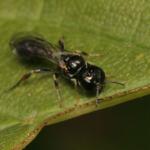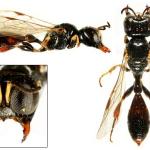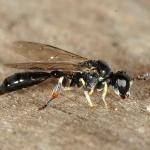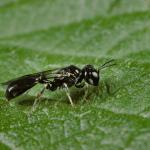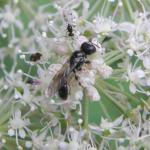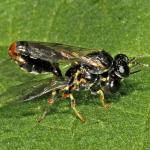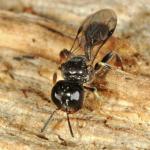A small, stem nesting solitary wasp. Identification keys are given in Yeo & Corbet (1995), Richards (1980) and Lomholdt (1984).
Widely recorded from England and Wales north to Cumberland, though Richards (1980) gives "north to Inverness" and indicates that the species has been recorded from Fermanagh in Ireland. The somewhat disjunct distribution of the mapped records suggests that the species may be under-recorded in the Midlands.
Overseas this species is found throughout Europe eastwards to Japan.
This species is not regarded as being scarce or threatened.
Found in a range of habitats but more often recorded from areas close to water.
The species has a long flight period running from late April into September, though the majority of records come between June and August.
R. coarctatum stocks its nest cells with a mixture of small flies (e.g. Chironomidae, Culicidae, Mycetophilidae and Tipulidae). Occasionally, Psocoptera and Neuroptera are utilised (Lomholdt 1984).
The species nests in hollow plant stems, though occasionally the species is recorded from old wood (Richards 1980). Nests are often very long, sometimes containing 29 cells (Danks 1971). Where space allows, the nest is branched, and old nest sites are often reused.
Angelica species.
None recorded from Britain. Parasitoids known from Scandinavia (Lomholdt 1984) are Ischnurgops sp. and Demopheles sp. (Hym., Ichneumonidae), Eurytoma sp. (Hym., Eurytomidae), Diomorus armatus (Hym., Torymidae) and the Sarcophagid fly, Oebalia minuta (as Ptychoneura rufitarsis). The Chrysid wasp Omalus auratus is also recorded as a parasite.
2005


